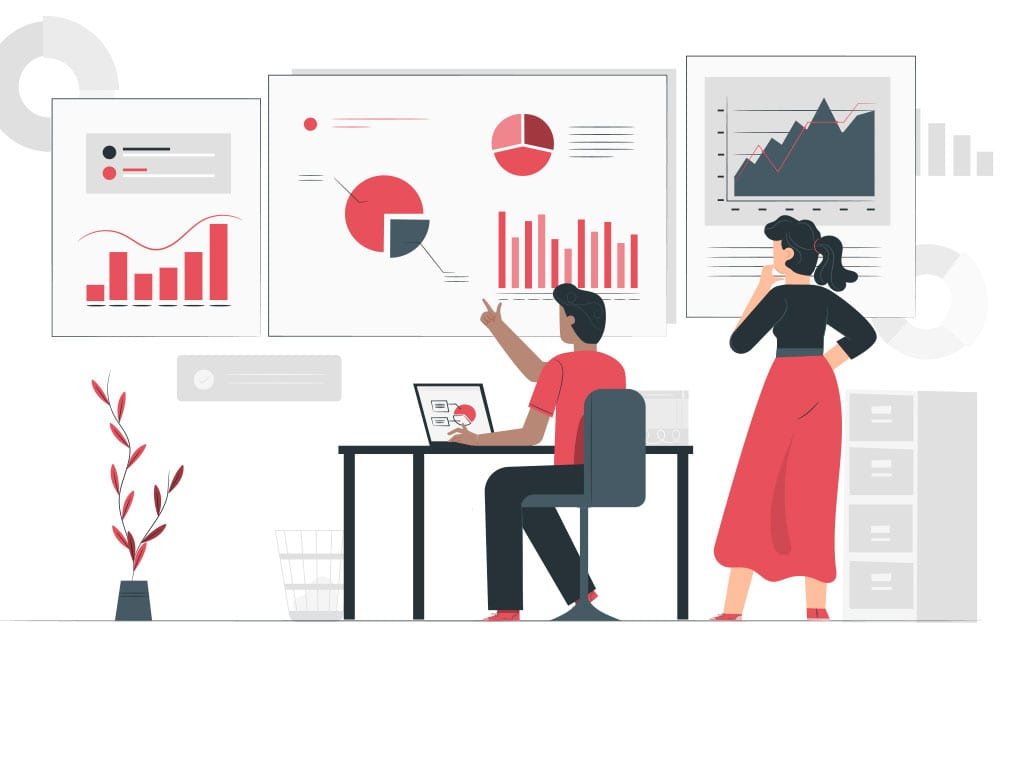 Patrick Dunne
Patrick Dunne
Forum Strategy Associate
In a recent Linkedin Article, From a Maps to a SatNav world -The way Boards are taking decisions is changing, I shared the chart below and made a few comments on the characteristics of “Data Savvy” boards.

The chart and accompanying comments seemed to strike a chord and in many of the follow up chats and comments resulting from it I have been asked to say a bit more on the topic. So, here goes.
First, we’ll look at what we might mean by “Data Savvy”, then why it matters and what it means for Chairs, Nominations Committees, Board Reviewers and those running Board Development Programmes before ending with a few book tips for those who want more.
What do we mean by “Data Savvy”?
Somewhat ironically, measuring data savviness hasn’t become a precise science yet. According to the dictionary “Savvy” means “shrewdness and practical knowledge; the ability to make good judgements.”
The implicit assumption in the chart above is that boards that are either devoid of the use of data or evidence in decision making or those that are overwhelmed by their data are far from being “Data Savvy” and are likely to make poor judgements.
Whereas boards that can understand:
- What data is needed to make the best decision it can make with the best available information it can gather.
- What the data that is presented to them means
- How to put that data into context and proportion.
- How to distinguish between facts and interpretations;
- As well as understand the data’s real relevance to decision.
Are probably reasonably data savvy.
If they can then also combine this with:
- Being able to interrogate the data, assess its reliability and relevance to the decision being taken as well as recognise the “Noise” in the data.
- Understanding the differences between causation and correlation as well as margins for error and significance.
- Having the degree of self-awareness to recognize their own inherent biases.
- Being able to effectively communicate the analysis of the data that underpins their decisions and;
- Can provide a balanced level; of oversight and support to help the executive in determining the right data strategy and then ensure that it is being achieved.
Then they are likely to be a truly “Data Savvy” board.
Why does it matter?
We live in a world where more data is available than ever before and where the analytical and presentational tools to understand and communicate that data are ever more sophisticated. Having a board that understands what data and evidence will be most helpful in making a decision and who then have the ability to understand it as well as challenge it and any underlying assumptions made in its presentation and can then add their own experience, insight and instinct to form a judgement must help.
Fundamentally, assuming that the purpose of the organisation is clear and that the board’s role is essentially to ensure that there is the right strategy, the right resources and the right governance, then the ability to be “Data Savvy” in all of these areas is critical to performance.
The development of new analytical tools for better understanding of organisational culture, stakeholders and other key success factors also means that boards not only have more data and evidence to drive decisions at their disposal but that they need to be able to understand them.
Boards and Executive teams than can respond to signals in the key data that are most relevant for their business are also, other things being equal, likely be more agile and to adapt and seize opportunities more quickly and intelligently than their Data Devoid or Drunk colleagues who will tend to rely more on luck than judgement.
It also matters from a risk management perspective. All too often we hear the cry “Why didn’t the board spot the signals”. In the worst cases, the failure reports tend to point to Boards being at either end of the “Devoid to Drunk” spectrum.
For some boards, one of the reasons that they get data drunk is that the executive get tempted to dump all of the data on them in an effort to shift responsibility to the board and cover themselves. The statement “Well the info was in the board pack” may be accurate but if it is buried and lost in a sea of numbers or charts and not given the prominence it deserves then that’s disingenuous.
It’s a real challenge for management to know where to draw the line in terms of which data to give to the board and how to present it. Too much and the risk of getting a little tipsy is high. Too little and they may be accused of hiding things from the board.
One area that I suspect is increasingly coming up on board agendas is “Data strategy”. This is not simply about GDPR, Data Protection, Cyber Crime or the Risk Management aspects of data but more about value creation through thinking about the use of data to drive better decisions and in the commercial value of the data itself.
Although I have no data to support this, it seems logical that being “Data Savvy” should also mean that we are more likely to understand the business. We will still have to use our judgement and take note of our collective instincts and experience and remember that the data is an important input but one not to be followed blindly. Yet failing to make the best use of the data is like flying in fog without knowing where the ground, hills or other planes might be.
Finally, on why it matters, if like me you feel that three defining characteristics of good board members are judgement, interpersonal skills and antennae then I think the ability to be “Data Savvy” boosts two of these significantly. Your judgements are likely to be better informed, your antennae sharper and asking really good clarifying questions enhances respect and increases your influence. So you need the interpersonal skills to go with your “Data Savvy” so that you can increase the impact of your questions.
What does it mean for Chairs, Nominations Committees, Board reviewers and those providing Board Development programmes?
It means that in considering the composition of the board and any new appointments that Chairs, Boards and Nominations Committees in particular, may need to heighten their awareness of how “Data Savvy” the existing board is and what that might mean for future appointments.
Board reviewers may also consider adding the “Data Savvy” category to their list of criteria when reviewing composition and skills gaps.
It may also mean that, just as in other areas, there is value in some knowledge or skills development for the board on the topic. I think there might be a gap in the market here for suitably qualified people who get what boards do to provide boosters for boards.
In addition, those already offering board development programmes might consider adding “Data Savvy” modules to their programmes.
A few book tips:
If you are looking for a straightforward introduction to the topic then I would enthusiastically recommend Professor David Spiegelhalter’s “The Art of Statistics”. This is a very accessible book written by one of the best communicators on stats around. Not only is it informative and thought provoking but it is also enjoyable.
Another fun read is the late great Hans Rosling’s “Factfulness” . I was privileged to see Hans in one of his last public appearances and that twinkle in his eye driven by his mission to “fight devastating ignorance with a fact-based world view” comes over superbly in the book. It is a short book crammed full of wonderful examples of how our instincts can lead us to either not seek, understand or ignore the facts.
On the subject of ignoring the facts, or more precisely overlooking them, Professor David Hand’s “Dark Data” is another good read. This is a very thought-provoking book about the gap between the data that we have at our disposal but don’t use and why we don’t use it. In my own Boards book I emphasise the need for Boards to think about the data they need to be able to make the best decision in advance of taking the decision. This book illustrates many powerful reasons as to why this is a good idea.
Matthew Syed’s brilliant “Black Box Thinking” picks up an important aspect of dark data. The main theme of the book is best described as how come so few sectors and organisations adopt the principle of Black Box thinking used so successfully in the aviation sector to drive down failure rates. The principles of recording, transparency, learning from error and rapidly communicating causes of failure to bring about system change are so evidently valuable. Yet as humans we are instinctively embarrassed by failure, rooted to hierarchy and have a high need to avoid short term discomfort.
Probably the most famous book on the subject of decision making these days is “Thinking Fast and Slow” by Daniel Kahneman. It’s almost compulsory reading for board members and executive leaders and explores how we take decisions as well as the many biases we are susceptible to and other decision traps. The first section is a bit heavy going but it well worth persisting with. It’s a book that I have found myself reading many times and going back to.
Daniel’s latest book which he wrote in collaboration with Olivier Sibony and Cass R Sunstein looks at another aspect of being “Data Savvy”. It’s called “Noise” and essentially looks at how our judgement can be impaired by the noise that is going on when we make decisions, including noise in the data.
Finally, if you aren’t a booky person you might like to listen to Tim Harford’s excellent “More or Less” show on BBC Radio 4 which is a very good show which tries to make sense of the numbers which are in the news.
The Author is an experienced Chair and author of the award-winning book Boards


